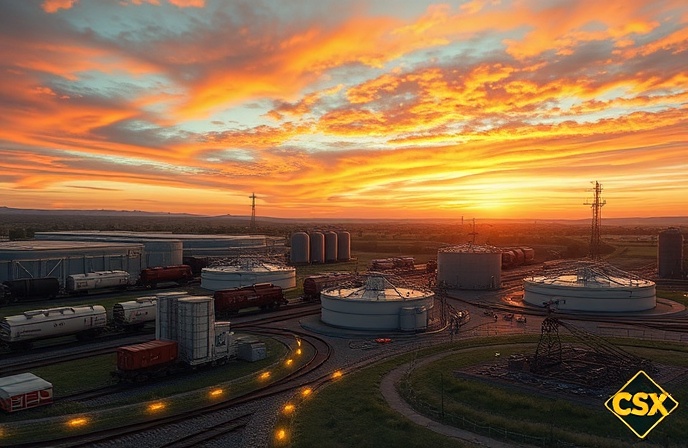Chennai Metro: Hitachi’s $200M AI Train Leap

This article delves into the significant contract awarded to Hitachi Rail for the implementation of cutting-edge signaling technology in the Chennai Metro Rail Project, Phase 2. The $200 million contract highlights the growing importance of advanced signaling systems in modern, high-capacity metro networks. We will explore the technological advancements represented by this project, focusing on the integration of Communication-Based Train Control (CBTC) and Automatic Train Operation (ATO) systems. Furthermore, we will analyze the broader implications of this project for the Indian railway industry and the global trend toward autonomous train operations. The discussion will also touch upon the economic and social benefits of such technologically advanced mass transit systems, including increased efficiency, enhanced passenger experience, and sustainable urban development. The Chennai Metro expansion serves as a compelling case study illustrating the increasing adoption of sophisticated technological solutions within the global rail sector.
Hitachi Rail’s Chennai Metro Contract: A Technological Leap
Hitachi Rail’s $200 million contract for Chennai Metro Rail Project, Phase 2, marks a substantial investment in advanced signaling and train control technology. The core of this project lies in the deployment of a fully autonomous digital signaling system. This system will rely heavily on Communication-Based Train Control (CBTC), a sophisticated technology that allows for precise train control and higher train frequencies by enabling continuous communication between trains and the central control system. This stands in contrast to older, less efficient systems that rely on fixed block signaling.
Integration of CBTC and ATO for Autonomous Operation
The success of this project hinges on the seamless integration of CBTC with Automatic Train Operation (ATO). ATO utilizes the data provided by the CBTC system to automate many aspects of train operation, including speed control, braking, and door operation. This integration enables the creation of a driverless, or autonomous, train system, significantly improving efficiency and safety. The ATO will continuously calculate optimal speeds based on real-time information, automatically adjusting traction and braking to maintain precise spacing between trains, reducing energy consumption, and ensuring punctual operation. The 90-second headway (time interval between trains) is a testament to the precision and high capacity afforded by this technology.
Enhanced Passenger Experience and Operational Efficiency
The implementation of this advanced technology in Chennai Metro Phase 2 will translate into a multitude of benefits for passengers and the overall operational efficiency of the system. Passengers will experience smoother, more reliable journeys with reduced dwell times at stations due to the precise train control and automated processes. The increase in train frequency will significantly boost the system’s capacity, addressing the growing demands of a rapidly expanding urban population. Furthermore, automated door operation and advanced passenger information systems will enhance the overall passenger experience, contributing to a more comfortable and convenient commute.
Economic and Social Impact
Beyond the immediate technological advancements, this project has broader economic and social implications. The investment in modern infrastructure creates jobs and stimulates economic growth within the region. The improved public transportation system contributes to reduced traffic congestion, decreased carbon emissions, and enhanced connectivity within the city. This directly contributes to sustainable urban development and an improved quality of life for Chennai’s residents. The project serves as a showcase for the potential of advanced rail technology to transform urban environments and addresses pressing issues of urban mobility and sustainability. The adoption of such technology is likely to influence other metro projects in India and globally.
Conclusion
Hitachi Rail’s contract for the Chennai Metro Phase 2 represents a significant milestone in the adoption of advanced rail technologies in India. The deployment of fully autonomous digital signaling, integrating CBTC and ATO systems, signifies a paradigm shift towards more efficient, safer, and sustainable urban transportation. The project’s success will not only enhance the capacity and reliability of the Chennai Metro but also serve as a model for future metro developments in India and around the world. The focus on automation not only improves operational efficiency, reducing delays and increasing passenger throughput, but also paves the way for significant improvements in the passenger experience through smoother journeys, reduced wait times, and enhanced information systems. This investment contributes directly to economic growth, job creation, and improved urban mobility, aligning perfectly with sustainable development goals. The combination of high-tech signaling with ATO demonstrates a commitment to optimizing every aspect of the passenger journey, from increased capacity and frequency to a more comfortable and convenient commute. The project is a shining example of how advanced technology can transform urban landscapes, addressing modern challenges related to population growth, traffic congestion, and environmental concerns. Ultimately, this initiative signals a considerable advancement in urban transportation planning and execution, inspiring similar projects globally.

